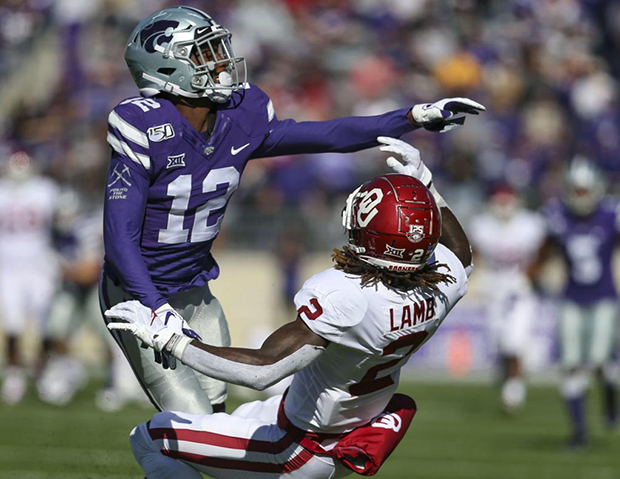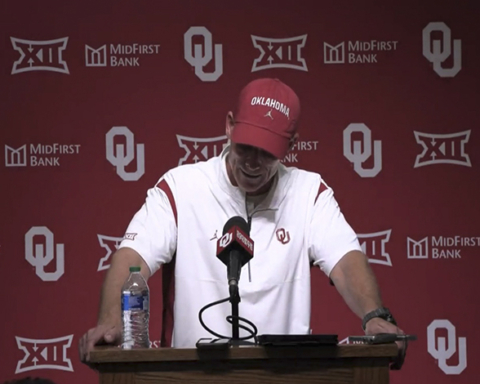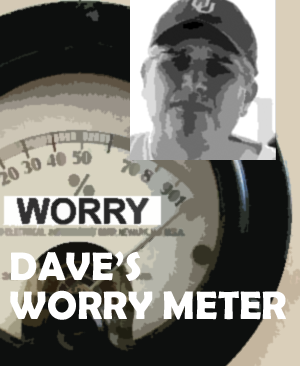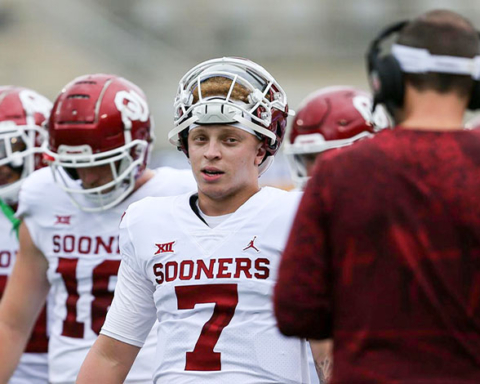The ghost of defenses past reared its ugly head Saturday in Manhattan as the Kansas State Wildcats offense gashed the Sooners defense in a second-half onslaught that delivered Oklahoma’s first season loss, 48-41.
Kansas State scored 17 unanswered points in the third quarter, helped by a uncharacteristic kick return fumble that turned a tight game into a bleak game for the Sooners.
But the bad news began late in the second quarter when a flubbed catch on a trick play set up Kansas State with field position that allowed them to maintain a 24-23 lead at the half.
It was a precise and balanced offense for Kansas State that allowed them to roll over Oklahoma. The Wildcats ran for 213 yards and passed for 213 yards.
The Sooners offense stormed back in the fourth quarter to cut the lead to 48-41 with a field goal with 1:45 left, but an onside kick recovery by the Sooners was negated by an illegal touching penalty confirmed by video review.
The K-State win was their first against Oklahoma in Manhattan since 1996, when the Wildcats defeated a John Blake-coached Sooners, 42-35. The loss ended a 22-game road victory streak, the longest in the nation.
The loss likely eliminated the Sooners from any post-season contention, although their Big 12 championship chances remain.
The Sooners 7-1 drop to 4-1 in conference play.
UPDATE: The officials’ decision to negate Oklahoma’s onside kick recovery turned controversial after the game when the video replay showed the Oklahoma player blocked into the kicked ball .
The game referee issued a statement to support the officials’ decision, but cited the wrong provision of the NCAA football rule book.
Referee Reggie Smith issued this statement:
“We did consider all aspects of forced touching. However, based on Rule 2-11-4-c, this is why we came to the decision that we came to. Rule 2-11-4-c was the primary determination for considering forced touching.”
The rule cited by Smith is titled “Fumble, Muff, Batting and Touching the Ball; Blocking a Kick.” It states:
“c. Forced touching results when a player’s contact with the ball is due to (i) an opponent blocking him into it or (ii) the ball being batted or illegally kicked into him by an opponent. If the touching is forced the player in question by rule has not touched the ball.”
Smith’s statement suggest the officials deemed the contact by the Oklahoma player was not a result of having been blocked into the ball and was therefore not a “forced touching.”
However, Rule 6-1-4-a, is the rule applicable to legal kick offs, titled “Forced Touching Disregarded”. That rule states:
“A player blocked by an opponent into a free kick is not, while inbounds, deemed to have touched the kick.”
Photo credit: Caitlyn Epes/The Daily


 Follow
Follow


